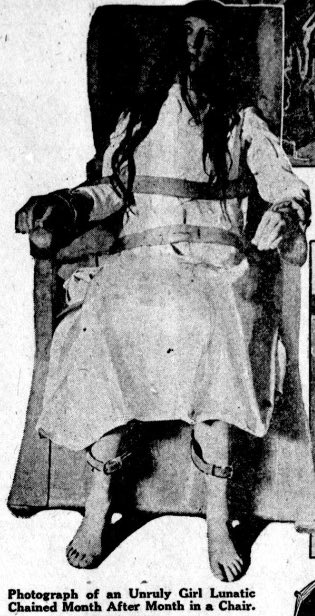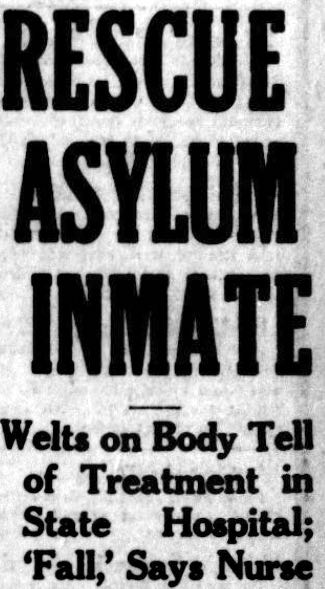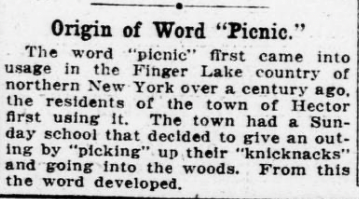
It would be easy to think that women were treated better than the men in the old insane asylums, but nothing could be further from the truth. In fact, women were treated just as horribly as the men and lived pitiful lives at the mercy of the cruel hearted institutions that were once prevalent across the U.S., Europe, and Australia.

Wood Wedge and Food Pump
Whether or not a patient was refusing to eat the food given to her at an asylum, she might still have been faced with the wood wedge and food tube. It was a favorite form of torture at many asylums.
In an article printed in 1878, the apparatus and torture was described:
“In feeding with the stomach pump, a piece of wood three fourths of an inch square, and long enough to reach across the face, is partially inserted in the mouth. A central opening in this piece of wood allows the passage of a flexible tube, through which the food is conducted to the stomach. This is the description of the instrument abolished in England, abolished in all civilized communities, but preserved at the Minnesota Hospital for Insane to torture patients to death.” [1]

She Supposedly Fell
In 1921, a terrible case of abuse came out regarding the treatment of a patient at the Western Washington Hospital for Insane. Grace Davis had undergone an operation at a local hospital. Shortly afterwards, she came down with a fever and appeared to be delirious as a result. The hospital pulled her mother aside and asked her to fill out the paperwork necessary for Grace to be transferred to another hospital. The mother consented without realizing that they were sending her daughter to a mental hospital.
Years passed by. The mother would visit her daughter and at first believed that her daughter was getting better, but then things took a turn for the worse. Her daughter began to lose weight and she appeared fearful during the visits.
One day the mother went to the hospital to see her daughter and was told she was not allowed to visit her. Mom got upset and threatened to take the matter to court, so the hospital agreed to let Mom go up to her daughter’s ward:
“The nurse said that I mustn’t be surprised at what I saw, for Grace had had a fall. I went in, and I almost screamed when I saw her. Her face was black and blue, and her body was so sore and painful she could not get into a comfortable position. And she looked as if she had been starved for weeks.”
The mother questioned her daughter about the bruises, but poor Grace was too scared to talk about what had happened.
She confronted the nurse, but all the nurse would say was that her daughter was “violently insane” and was one of the worst patients in the hospital.
The mother confronted a doctor next:
“[I] was told another story. I was told that Grace attempted to hug another woman patient who resented the approach and had struck her nose. But she was hit more times than that, for besides the black eye, there are those black bruises on her legs and hips and back.”
Fortunately, the mother was able to get Grace removed from the hospital. She brought her home, fed her, and did her best to repair her daughter on her own. [2]

Tied to a Chair and Beaten
In 1900 there was another story about a mother who had gone to see her daughter at the Agnews Asylum.
“I went to the asylum yesterday to see my daughter. She had a pair of black eyes, and when I asked her what was the matter she said that one of the attendants had tied her in a chair, gagged her and beaten her. I examined her body and she was covered in black and blue marks. I complained to Drs. Crane and Stocking, and they told me that my girl had done it herself. I told them what she had stated to me and said it was impossible that she could have made the marks herself. I wanted to take her away with me, but they would not let me.”
This has always been a major problem in mental health facilities. Staff denies any wrongdoing and will not release the patient. If the patient speaks up about abuse, it is almost a guarantee that she will be abused even further. [3]

Shared Bath Water
Mary E. Bowen, a former asylum inmate in New York, gave her testimony into the conditions of the asylum in 1883. According to her experiences, up to fifty inmates would be bathed in the same bathwater. Many of the patients suffered from skin diseases which were being spread from inmate to inmate due to sharing bath water. She also said that:
“Vermin were abundant all over the house, and rats so numerous that weak and helpless patients were attacked and bitten and were powerless to defend themselves. One woman, who died, was too large for the coffin provided and her body was crowded into a box by men standing upon it. She had on the same bonnet worn when alive.” [4]


